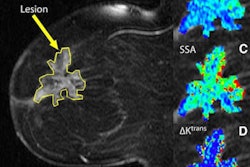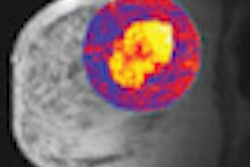The overall incidence of breast cancer is generally higher among white women than black women, but the incidence of a second breast cancer in the opposite breast is higher among black women, according to a study presented at the annual American Association for Cancer Research (AACR) meeting being held this week in Washington, DC.
When cancer is diagnosed in women younger than 45 years old, the incidence of primary breast cancer is higher among blacks than among whites and the cancer tends to be more aggressive, according to researchers from George Washington University. When cancer is diagnosed at an older age, the incidence is higher among white women, and because most breast cancers are diagnosed in older women, the overall incidence is higher in whites, according to lead researcher Hala Nsouli-Maktabi, PhD.
"When the disease does occur in blacks early on, it tends to be more aggressive, more likely to be estrogen-receptor negative, and more likely to cause death," Maktabi said.
Maktabi and colleagues used Surveillance, Epidemiology, and End Results (SEER) data to evaluate breast cancer incidence among 415,664 white women and 39,887 black women diagnosed with primary breast cancer at age 19 or older and the possible development of a second cancer in the opposite breast.
Maktabi's team found that 450,936 women (both black and white) had survived two months or more after an in situ or invasive breast cancer. Of this group, 22,290 women developed a second primary breast cancer, and of these second primary breast cancers, 18,142 occurred in the opposite breast. The majority of the second primary breast cancers (18,227, or 81.7% of the 22,290 cases) occurred in women diagnosed with a first primary breast cancer at age 45 or older.
The incidence of second primary cancers of the opposite breast was higher among black women, and 83.2% of second contralateral cancers developed in those who were diagnosed with their first breast cancer at age 45 or older.
Second primary breast cancer followed the incidence pattern of the first primary breast cancer in black and white women diagnosed before age 45, according to Maktabi, opposite of the pattern of first primary breast cancer in black and white women diagnosed at age 45 or older.
"This should alert the physician to watch patients very carefully," Maktabi said. "A cancer in one breast should lead to a careful of examination of the other breast over a long period, just in case a cancer develops."




















